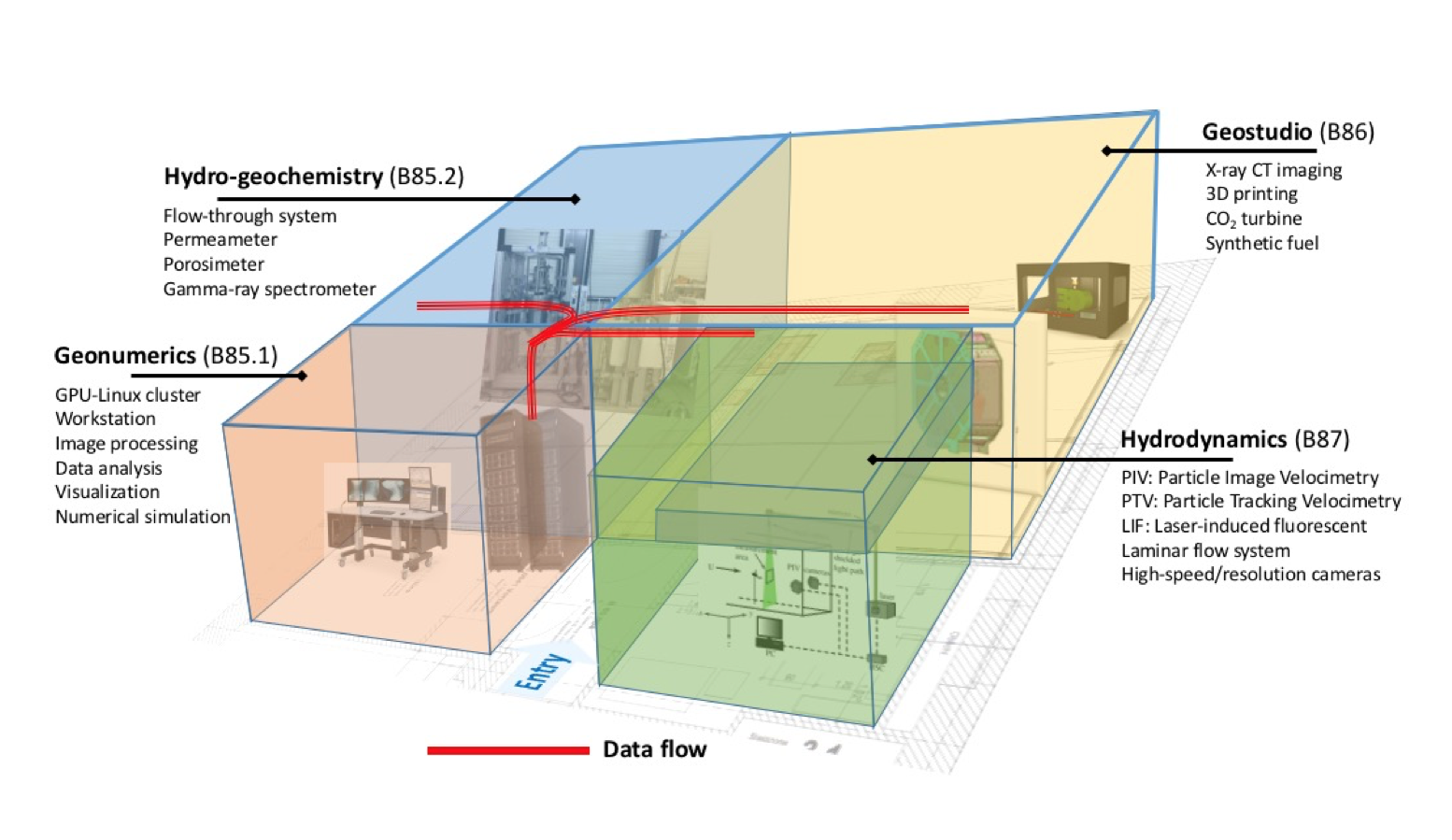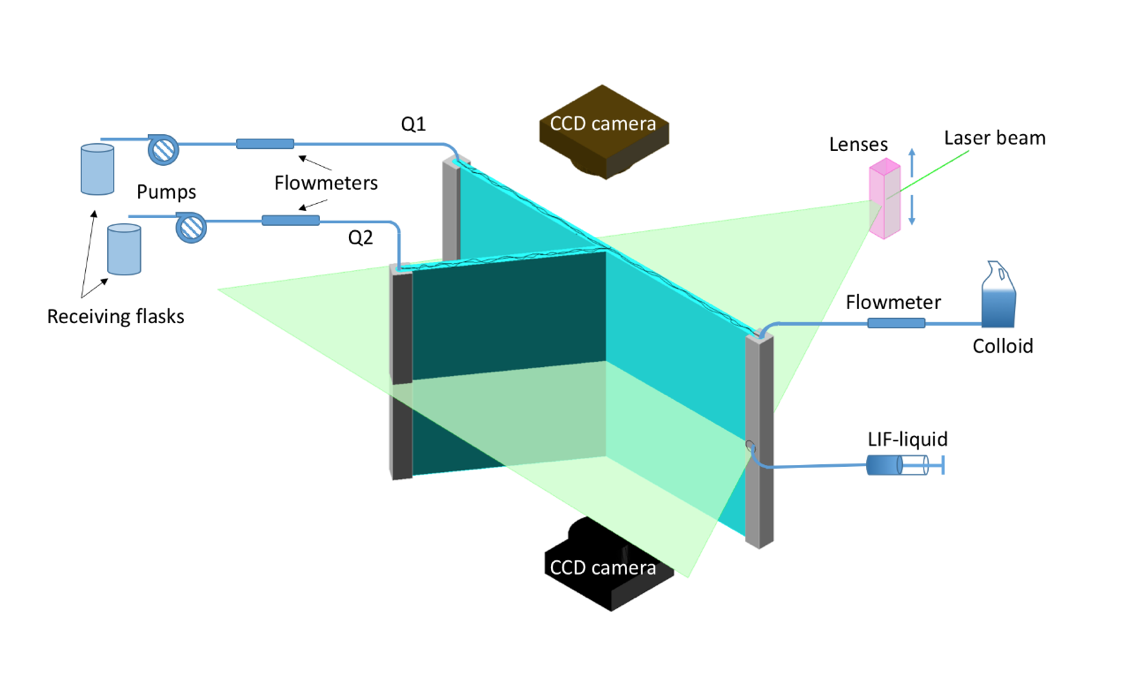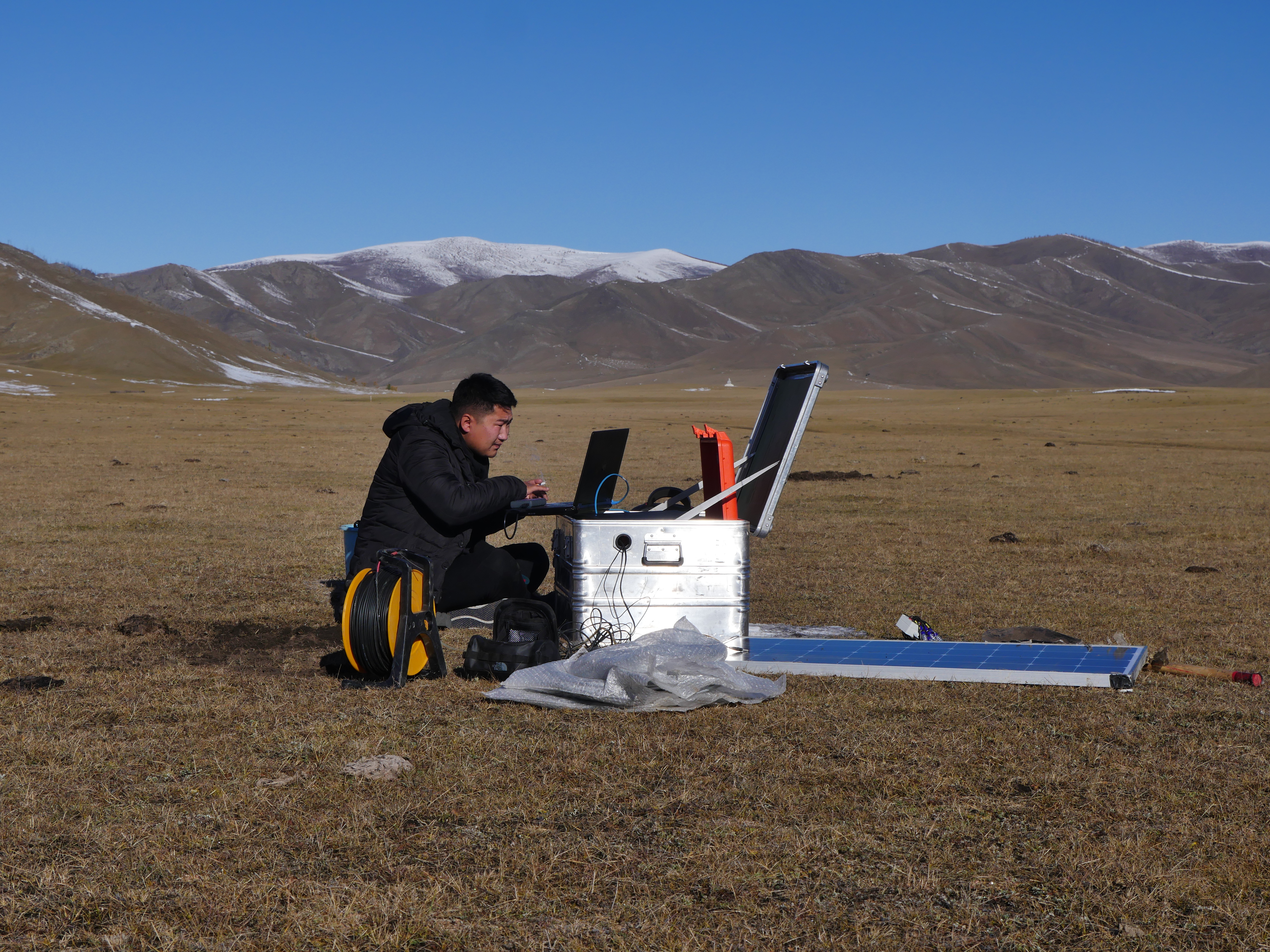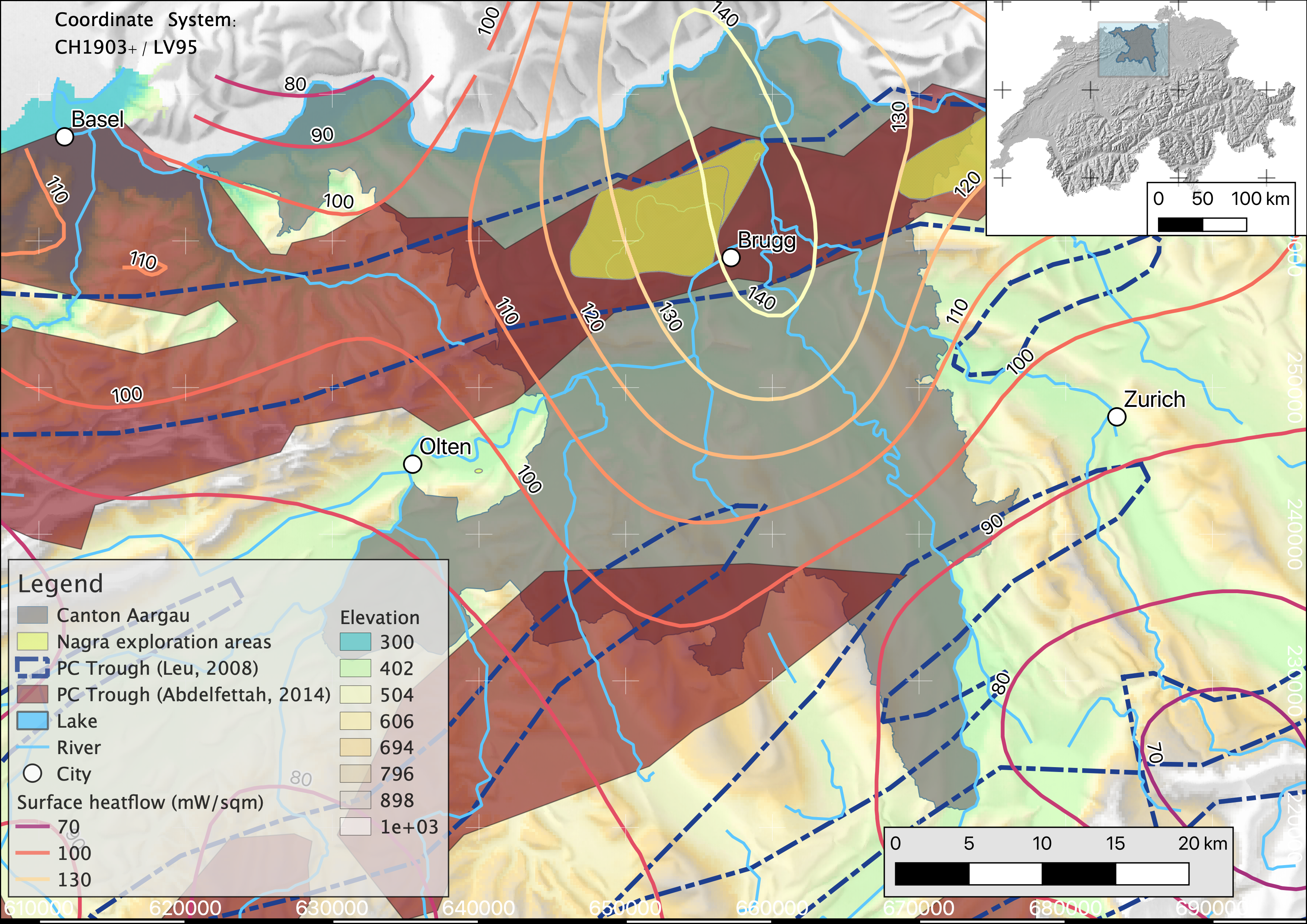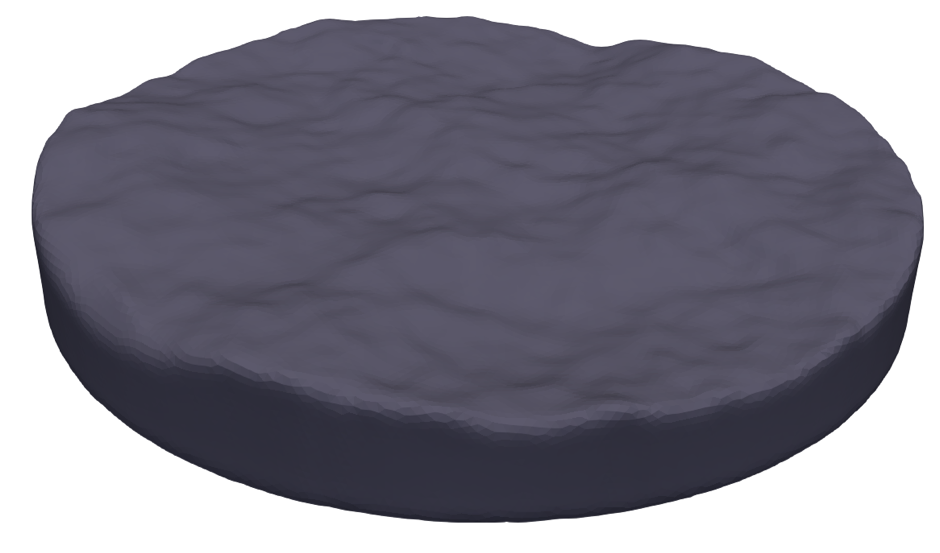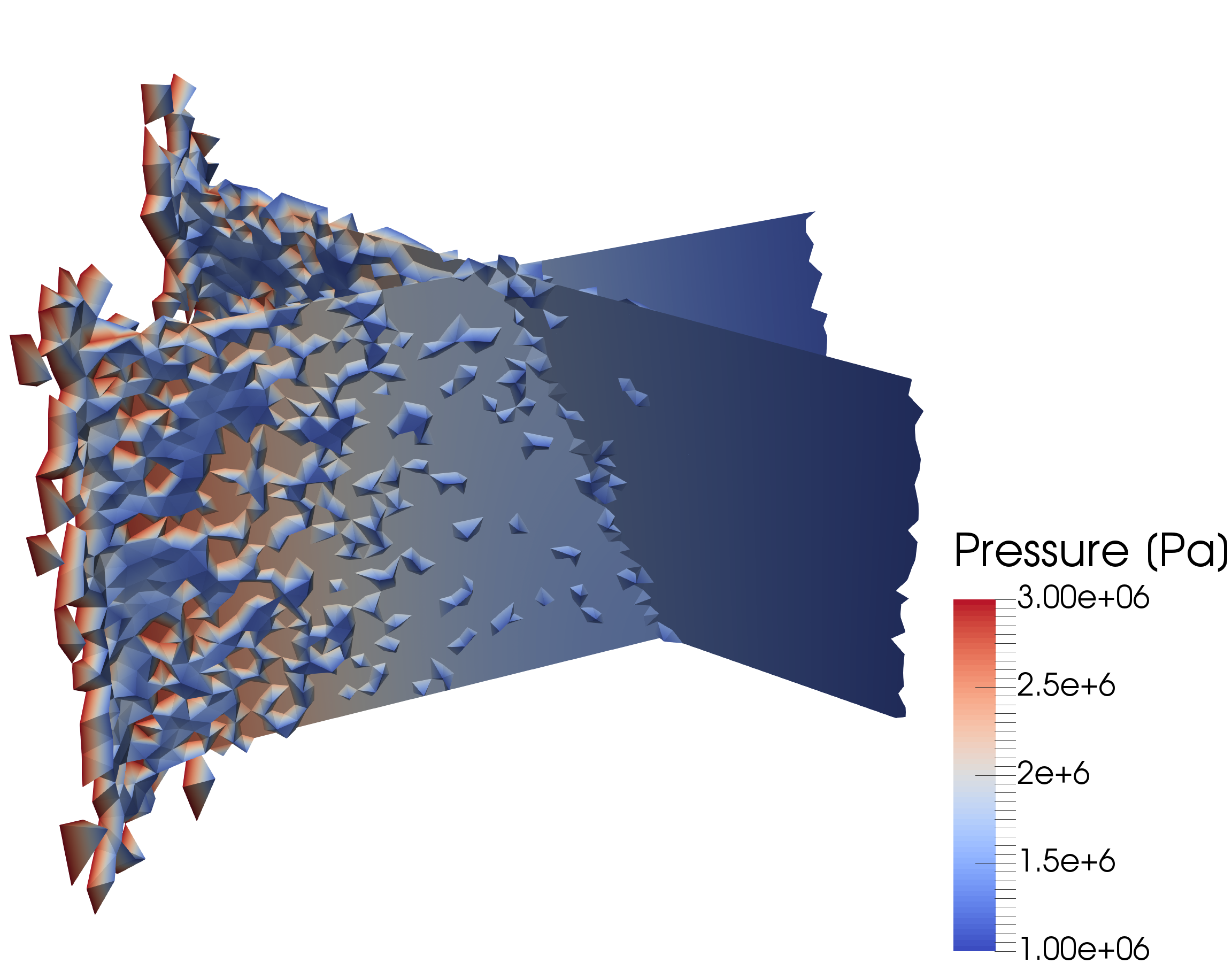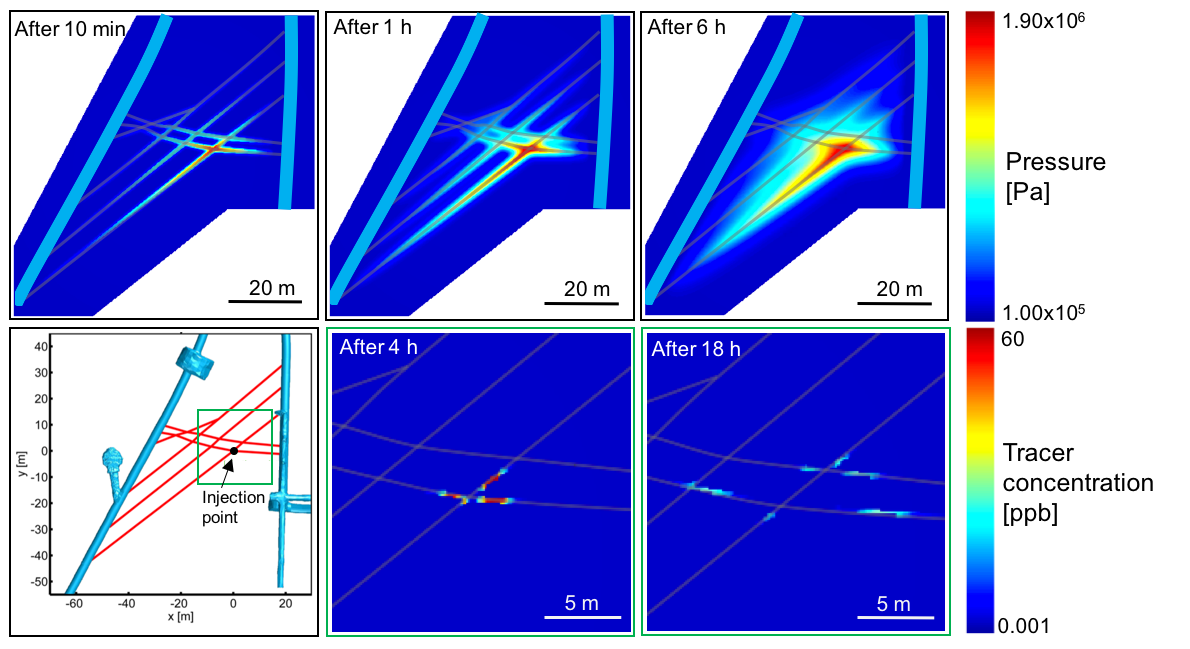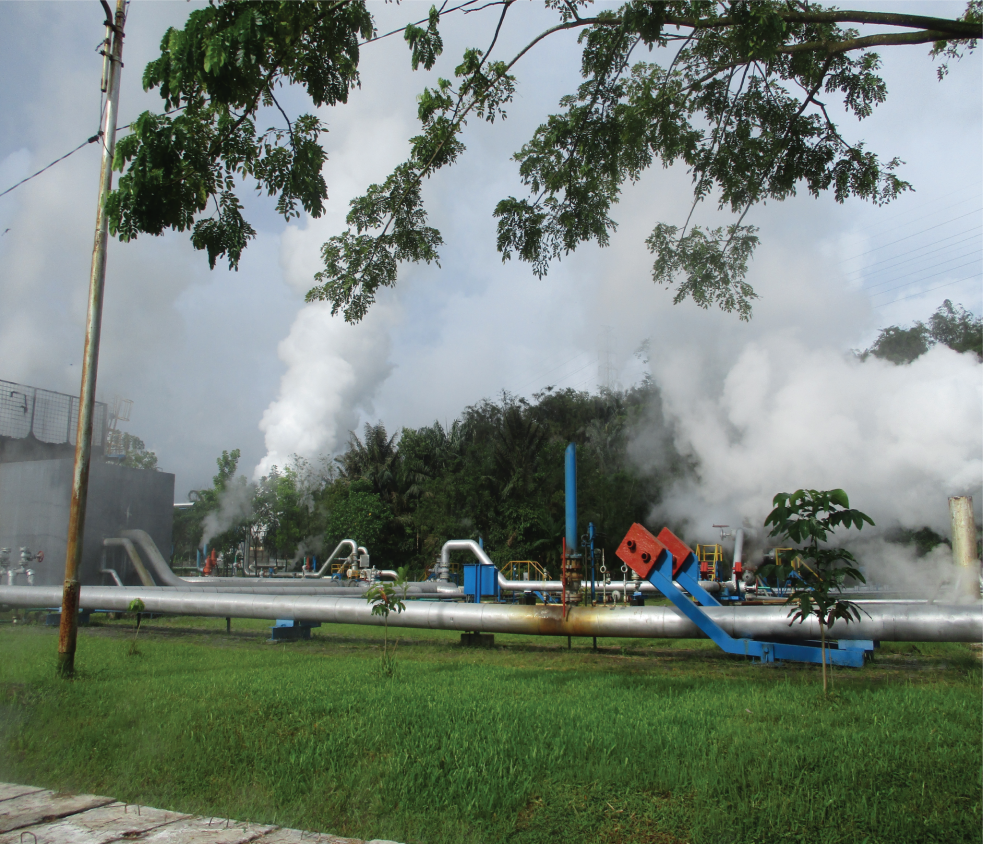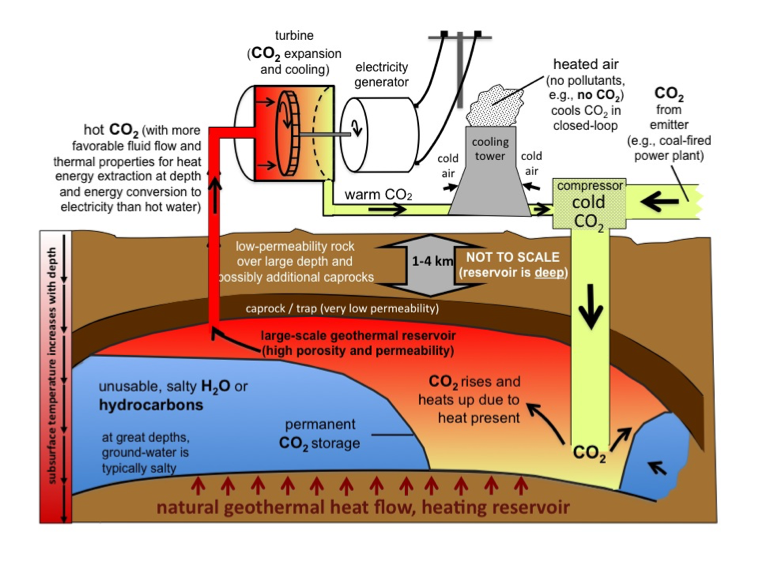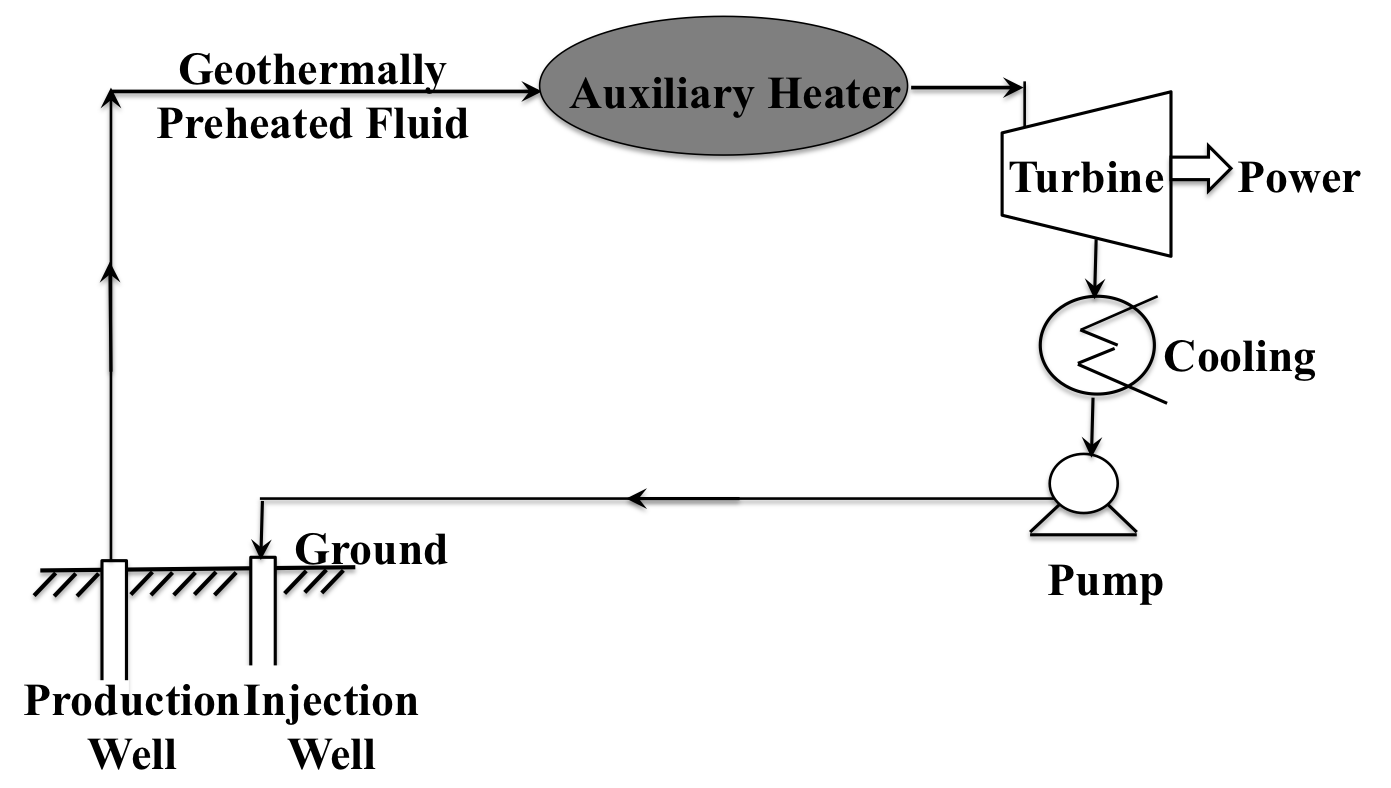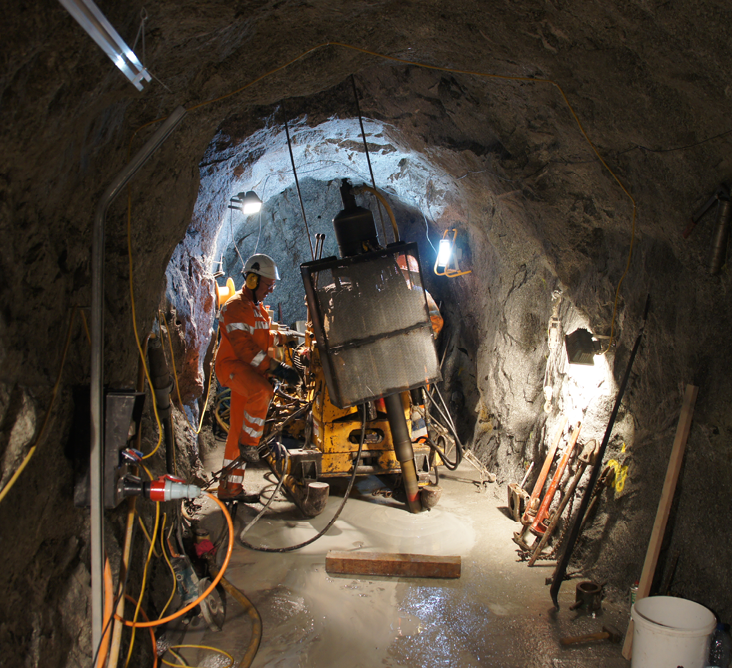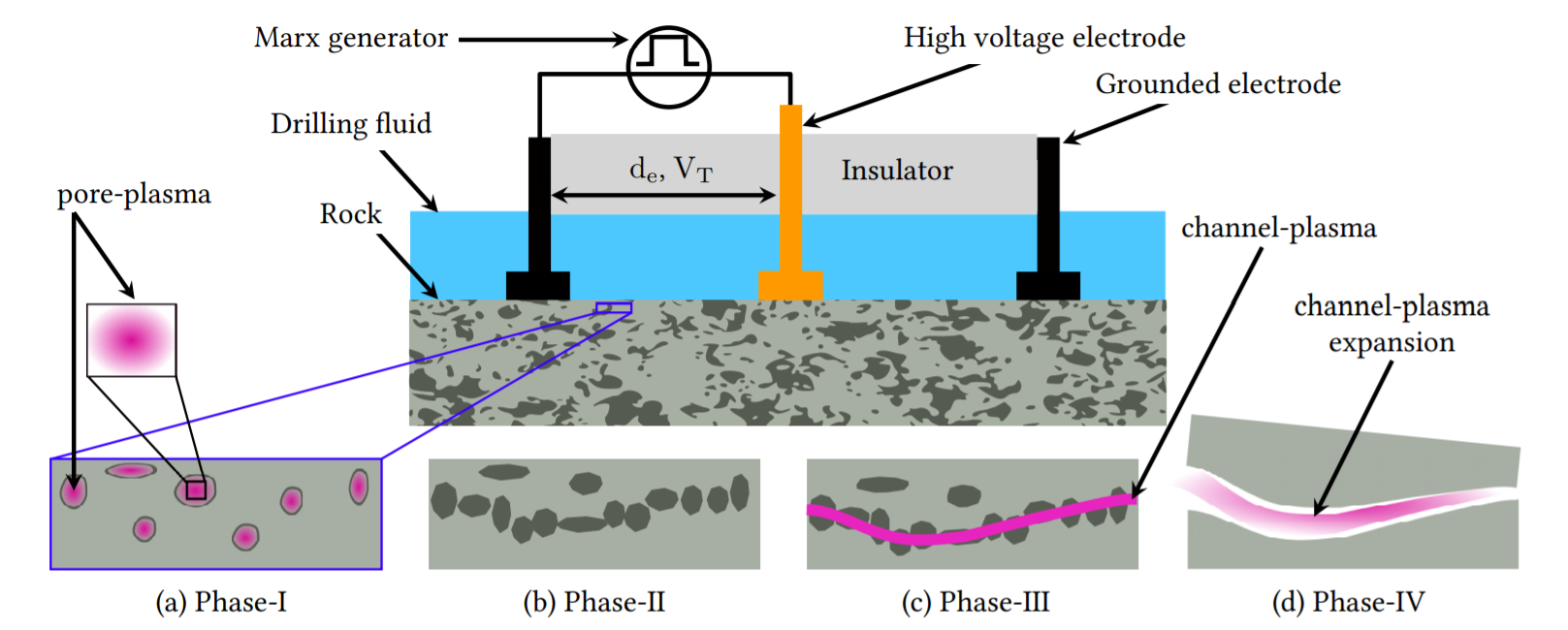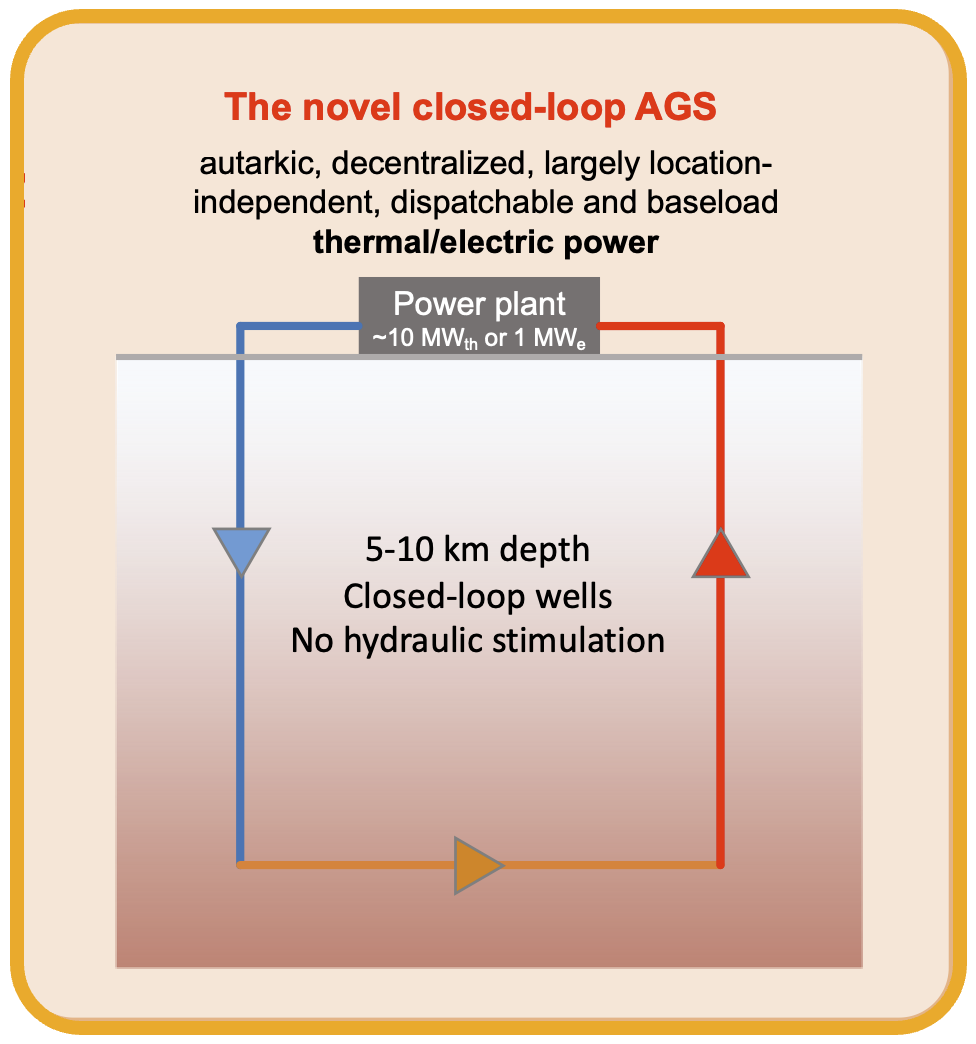Current Projects
Links to Categories
Reactive Transport
Mineral reaction rates in porous media, i.e. precipitation and dissolution, usually exhibit spatial scaling effects. There is a tendency for apparent reaction rates to decrease as one moves from the pore scale through the laboratory scale to the field scale.
Prof. Dr. Martin Saar, ETH Zurich
Dr. Anozie Ebigbo, ETH Zurich
Powei Huang, ETH Zurich
Utilization of underground reservoirs for geothermal energy extraction, CO2 storage, groundwater utilization, or waste fluid injection requires an in-depth understanding of fluid, solute (e.g., dissolved CO2, minerals, or waste fluids), and energy (heat, pressure) transport through often fractured porous geologic formations. Such operations necessarily perturb the chemical, thermal and/or pressure equilibrium between native fluids and rock minerals, potentially causing mineral dissolution and/or precipitation reactions with often immense consequences for fluid, solute, and energy transport, injectivity, and/or withdrawal in/from such reservoirs.
Prof. Dr. Martin Saar, ETH Zurich
Dr. Xiang-Zhao Kong, ETH Zurich
Mehrdad Ahkami, ETH Zurich
Scientific knowledge is based on quantitative observations of physical, chemical, etc. processes, often observed in laboratory experiments that test scientific theories.
Prof. Dr. Martin Saar, ETH Zurich
Dr. Xiang-Zhao Kong, ETH Zurich
With our cutting-edge fluid and solute transport visualization and quantitative measurement system, that combines Particle Image Velocimetry (PIV) with Laser-induced Fluorescence (LIF), we can simultaneously monitor the evolution of the 3D, multiphase fluid velocity field and associated solute transport, including quantification of 3D solute concentrations within a fractured porous medium.
Dr. Xiang-Zhao Kong, ETH Zurich
Isamu Naets, ETH Zurich
Deep Geothermal Energy is expected to meet 7% of the national electricity supply in the Swiss Energy Strategy 2050. In Switzerland, Enhanced/Engineered Geothermal Systems (EGS) are commonly considered the only option for deep geothermal electricity production. Previous studies (e.g., Randolph and Saar, 2011a; 2011b) have shown that using carbon dioxide (CO2) instead of water as the subsurface working fluid in EGS has many benefits.
Dr. Xiang-Zhao Kong, ETH Zurich
Marina Lima, ETH Zurich
Reaktoro is a unified framework for modeling chemically reactive systems. It provides methods for chemical equilibrium and kinetic calculations for multiphase systems. Reaktoro is mainly developed in C++ for performance reasons. A Python interface is available for a more convenient and simpler use of the scientific library. Currently Reaktoro can interface with two widely used geochemical software: PHREEQC and GEMS.
Dr. Allan Leal, ETH Zurich
Dr. Svetlana Kyas, ETH Zurich
Prof. Dr. Martin Saar, ETH Zurich
With this project we are conducting a regional magnetotelluric survey in the Ethiopian Rift Valley. Our goal is to obtain a crustal-scale subsurface image that shows the distribution of melt and how rift-related magmatism leads to the formation of prospective geothermal resources.
Prof. Dr. Martin Saar, ETH Zurich
Dr. Friedemann Samrock, , ETH Zurich
Prof. Dr. Alexey Kuvshinov, ETH Zurich
Dr. Alexander Gravyer, ETH Zurich
Dr. Shimeles Fisseha, Addis Ababa University, IGSSA
Luise Dambly, ETH Zurich
Hot rock in the subsurface, a remnant from Hangai’s volcanic history, heats fluids in the underground. Hydrothermal fluids migrate upwards along permeable fault zones, where they result in hot springs as observed in Tsenkher. This hot spring has a flow rate of more than 10l/s and a temperature that exceeds 80°C. With this project we will conduct magnetotelluric (MT) measurements during two field campaigns in 2019 and 2020.
Prof. Dr. Martin Saar, ETH Zurich
Dr. Friedemann Samrock, ETH Zurich
Batmagnai Erdenechimeg, ETH Zurich
The North of Switzerland is an area of interest for geothermal studies since it hosts a prominent heat flow anomaly with an enhanced near-surface heat flux when compared to the Swiss average.
Prof. Dr. Martin Saar, ETH Zurich
Dr. Friedemann Samrock, ETH Zurich
This pilot project aims at characterizing the geothermal heat-flux distribution in the Canton of Aargau to aid in the estimation of its geothermal potential.
Prof. Dr. Martin Saar, ETH Zurich
Dr. Jan Niederau, ETH Zurich
Dr. Friedemann Samrock, ETH Zurich
Over the last decade, UAV based geophysical prospecting has emerged as promising technology since it allows low-cost and time-efficient surveying even in difficult terrain.
Prof. Dr. Martin Saar, ETH Zurich
Dr. Friedemann Samrock, ETH Zurich
In order to address many of the energy and environmental challenges society faces, it is important to be able to characterise subsurface fluid flow. In low-permeability reservoirs, the fracture conductivity dominates the hydraulic properties of geo-formations. It is therefore crucial to develop a realistic understanding of their behaviour in in-situ conditions. Characterising the hydro-mechanical behaviour of fractures is closely tied to its surface geometry, namely, the fracture size, aperture field and its roughness.
Prof. Martin O. Saar, ETH Zurich
Dr Daniel Vogler, ETH Zurich
Dr Anozie Ebigbo, ETH Zurich
Hoda Javanmard, ETH Zurich
Characterizing flow and transport through fracture networks in low permeable rocks is a key question for many energy- and groundwater-related applications [Berkowitz, 2002]. Various computational approaches have been developed to address these problems. One is the discrete fracture network approach (DFN), where the fractures are explicitly represented and form networks.
Prof. Dr. Martin Saar, ETH Zurich
Dr. Anozie Ebigbo, ETH Zurich
Philipp Schädle, ETH Zurich
ATES can preserve summertime waste heat for wintertime district heating, thereby reducing heating cost and carbon emissions. We model the THM processes, such as ground deformation, that can occur when subsurface pressure and temperature are elevated.
Prof. Dr. Martin Saar, ETH Zurich
Dr. Daniel Birdsell, ETH Zurich
Tracer testing techniques are an essential tool in hydrogeology to characterize a shallow or deep layer of interest. Based on column transport experiments in porous media, DNA-labeled silica nanoparticles are evaluated for use as hydrogeologic tracers. And the so-called DNA nanotracer is applied for the first time in an unconsolidated aquifer.
Prof. Dr. Martin Saar, ETH Zurich
Claudia Deuber, ETH Zurich
Anniina Kittilä, ETH Zurich
As part of the SCCER-SoE strategy (Evans et al. 2014), the Deep Underground Geothermal Laboratory (DUG-Lab) at Grimsel in the Swiss Alps hosts experiments to demonstrate permeability enhancement and to characterize the created reservoir as a result of enhanced geothermal system (EGS) development.
Prof. Dr. Martin Saar, ETH Zurich
Dr. Xiang-Zhao Kong, ETH Zurich
Anniina Kittilä, ETH Zurich
Multiphase flow properties of a porous medium give insight into how different fluids can flow in a given porous rock: relative permeability (i.e., effective permeability of one phase) reveals how each phase is displaced in the porous space when other phases are present while capillary pressure refers to the interfacial forces between the fluids and the rock that partly drive the fluids distribution within the pores.
Prof. Dr. Martin Saar, ETH Zurich
Dr. Xiang-Zhao Kong, ETH Zurich
Jin Ma, ETH Zurich
Exploration and Operation of Geothermal Systems – A Research Group supported by Energi Simulation
Dr. Maren Brehme, ETH Zurich
The Lahendong geothermal field is a high-enthalpy system located in North-Sulawesi province, Indonesia. The Lahendong geothermal system as the primary subject of this project produces 80 MWe from the northern and the southern reservoirs with temperatures between 250 – 350°C (Yani, 2006). The Lahendong reservoir has been running for more than 18 years and experiences fast fluid dynamics as a result of prolonged utilization. The fluid dynamics significantly change the reservoir behaviour and the surface manifestations as reported by Suherlina, et al., 2022. Accordingly, the long-term sustainability of the Lahendong geothermal system needs to be planned appropriately in order to maintain well productivities and to prevent unexpected changes in the reservoir.
Prof. Dr. Martin Saar, ETH Zurich
Dr. Maren Brehme, ETH Zurich
Lily Suherlina, ETH Zurich
Coupling CCS and geothermal energy extraction, using supercritical CO2 (ScCO2) can in principle enable permanent storage of CO2 in (sedimentary basin) geothermal reservoirs while simultaneously extracting heat energy that can be used to generate clean, i.e., CO2-emission-free, baseload or dispatchable power.
Prof. Dr. Martin Saar, ETH Zurich
Dr. Anozie Ebigbo, ETH Zurich
Justin Ezekiel, ETH Zurich
CO2 Plume Geothermal systems involve injection of CO2 that comes from a CO2 emitter, as a working fluid to extract heat and pressure energy (enthalpy) from naturally high-permeability sedimentary or stratigraphic basins.
Prof. Dr. Martin Saar, ETH Zurich
Dr. Benjamin M. Adams, University of Minnesota
Dr. Nagasree Garapati
Basically, the installation of a new system starts directly at the water meter in order to take advantage of the highest gallons per minute (GPM). If you choose the “separate meter option” (where applicable), this “high volume” water source will be plumbed in automatically.
Prof. Dr. Martin Saar, ETH Zurich
Dr. Benjamin M Adams, University of Minnesota
Dr. Nagasree Garapati
Renewable, geothermal energy production from deep reservoirs relies on drilling boreholes of multiple kilometers in length. Drilling deep wells in abrasive and hard rock environments can result in increased wear for conventional rotary drilling methods.
Prof. Dr. Martin Saar, ETH Zurich
Daniel Vogler, ETH Zurich
In-situ hydraulic stimulation has been performed on the decameter scale in the Deep Underground rock Laboratory (DUG Lab) at the Grimsel Test Site (GTS), Switzerland..
Prof. Dr. Martin Saar, ETH Zurich
Daniel Vogler, ETH Zurich
The economic generation of electricity requires geothermal reservoirs that have temperatures higher than 150 degrees Celsius. As a result, the injection and production wells can reach 5 to 10 km depth. There is a problem: drilling occurs in polycrystalline rock, such as granite, where the conventional mechanical rotary drilling cost grows exponentially with depth. Nevertheless, a novel technology such as Plasma Pulse Geo-Drilling (PPGD) -assuming further development over time- can reduce the drilling cost by order of magnitudes. Therefore, this project aims to investigate the fundamental physics of the PPGD process by numerical modeling, and examine the PPGD applicability on depths higher than 5 km, experimentally.
Prof. Dr. Martin Saar, ETH Zurich
Prof. em. Hans-Olivier Schiegg, SwissGeoPower
Dr Benjamin Adams, ETH Zurich
Dr Daniel Vogler, ETH Zurich
Mohamed Ezzat, ETH Zurich
In this project, we propose to use a combined thermo-mechanical drilling (CTMD) technology to intensify the drilling process in hard rocks. This hybrid drilling technology is based on thermally-assisting conventional drilling using a flame-jet, and is expected to facilitate the drilling process by increasing ROP and decreasing drill bit wear, with a consequent reduction of overall project costs.
Prof. Dr. Martin Saar, ETH Zurich
Prof. Philipp Rudolf von Rohr, ETH Zurich
Dr. Edoardo Rossi, ETH Zurich
AEGIS-CH is an Innosuisse Flagship project with the aim to improve the resilience of the Swiss energy system through the development and integration of Advanced Geothermal Systems (AGS), consisting of deep closed-loop wells. AGS has the potential to provide decarbonized, domestic and decentralized heat and electric power. This enables firming up an increasingly solar/wind (and thus largely only intermittently available) Swiss energy supply system, supporting the Swiss Energy Transition Strategy (SETS) 2050. Together with our interdisciplinary academic and industry partners, new technology is developed to construct closed-loop AGS and the potential of AGS is explored in the context of the optimal energy mix.
Prof. Dr. Martin Saar, ETH Zurich
Prof. em. Hans-Olivier Schiegg, SwissGeoPower
Dr. Andreas Reinicke, ETH Zurich
Dr. Mahmoud Hefny, ETH Zurich
Jasper de Reus, ETH Zurich
DEPLOI the HEAT
Improvement of robust and safe geothermal production at lower costs with advanced directional drilling technology is the goal of the GEOTHERMICA project DEPLOI the HEAT.
Construction of multi-lateral wells is well known as an effective concept to overcome the challenges of reservoir heterogeneity by increasing the reservoir contact. However, the drilling costs for these structures are very high and multi-lateral well construction with standard rotary steerable systems is complex. A novel, directional steel shot drilling system, advantageous for construction of multi-lateral structures, will be tested at full scale as aprt of this project. Further, the potential impact of these multi-lateral structures on well productivity and economics of geothermal projects will be investigated by a techno-economic study.
Construction of multi-lateral wells is well known as an effective concept to overcome the challenges of reservoir heterogeneity by increasing the reservoir contact. However, the drilling costs for these structures are very high and multi-lateral well construction with standard rotary steerable systems is complex. A novel, directional steel shot drilling system, advantageous for construction of multi-lateral structures, will be tested at full scale as aprt of this project. Further, the potential impact of these multi-lateral structures on well productivity and economics of geothermal projects will be investigated by a techno-economic study.
Prof. Dr. Martin Saar, ETH Zurich
Dr. Paromita Deb, ETH Zurich
Dr. Andreas Reinicke, ETH Zurich





